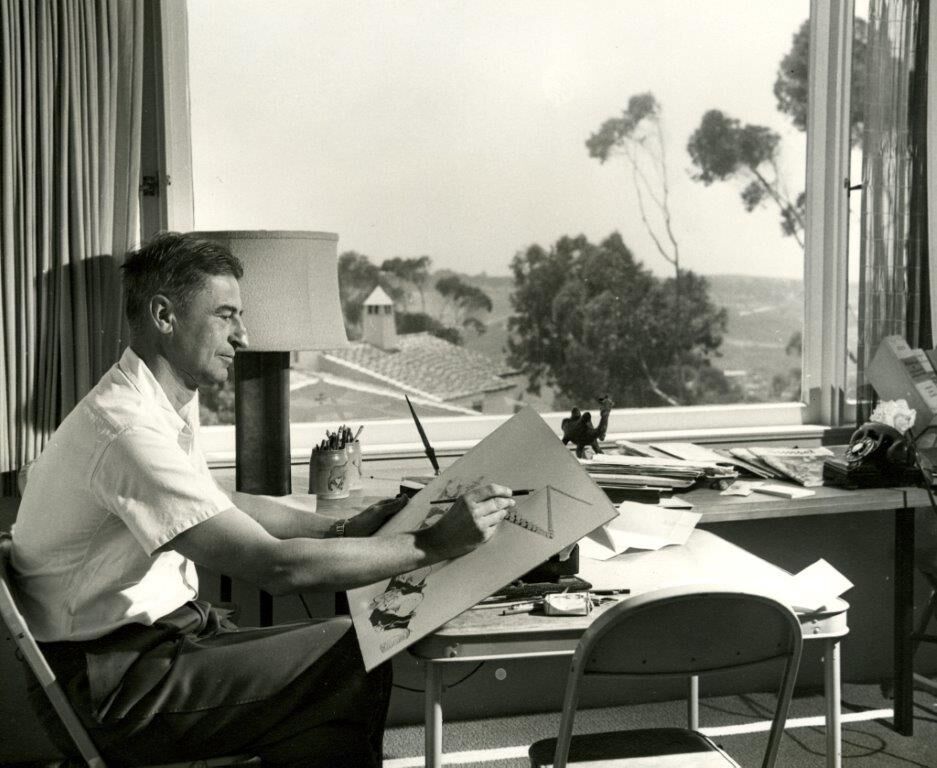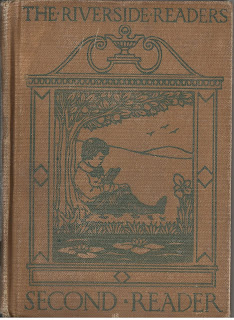The Story of Dr. Seuss
Theodor Seuss Geisel: The Real Dr. Seuss
8 things you didn’t know about Dr. Seuss
Canvas Arts | Jul 22, 2015
A long-lost manuscript from the beloved author and illustrator Dr. Seuss will be released next week, marking a quarter-century since his swan song “Oh, the Places You’ll Go!” empowered us to move mountains. The posthumous “What Pet Should I Get?” arrives July 28, two years after the author’s widow unearthed the story’s text and sketches. It features the siblings from “One Fish Two Fish Red Fish Blue Fish” on a trip to the pet store, which we know is never that sensible with a Seuss book.
Philip Nel, author of “Dr. Seuss: American Icon,” and Guy McLain, director of the Wood Museum of Springfield History, discuss how the author’s advertising beginnings gave way to Zooks and Zummers, pulling children’s literature away from the tsk-tsking of the Dick and Jane books and obliterating the boring belief that young readers ought to be prim and proper.
Thing 1. He got his sense of poetry from his mother.
Theodor “Ted” Seuss Geisel was born on March 2, 1904 in Springfield, Massachusetts, and years before his middle name became synonymous with rhyming whimsy in children’s books, “Seuss” was also his mother’s maiden name.
In their 1995 biography of the author, Judith and Neil Morgan said that connection carried significance for Seuss, who credited his mother with inspiring his well-known rhymes. Henrietta Seuss would chant softly to her children at bedtime with rhymes she memorized from her time working in her father’s bakery: “Apple, mince, lemon … peach, apricot, pineapple … blueberry, coconut, custard and SQUASH!”
“[Seuss] later said that, more than anyone else, his mother was responsible ‘for the rhythms in which I write and the urgency with which I do it,’” the Morgans wrote.
 | |||
| An early cartoon from Geisel in 1920 that was published in The Central Recorder, a newspaper of Central High School in Springfield. Image courtesy of Wood Museum of Springfield History Archives, Springfield Museums |
Thing 2. He never had any biological children.
The popular children’s author was childless. When asked why a writer of children’s books has no children of his own, Nel said Seuss had a response ready: “You make them, I’ll amuse them.”
Seuss wrote his first children’s book, an unpublished A-B-C book of creatures, in 1931, around the same time his first wife Helen Palmer learned she could not biologically carry children, according to the Morgans’ 1995 biography.
“I don’t think that’s a coincidence,” Nel said. “In some ways, he wrote for children to speak to that need in himself.”
After Helen died by suicide in 1967, Seuss eventually remarried to Audrey Dimond, who had two daughters, in 1968.
 |
| Seuss at his drawing table. Photo courtesy of Elizabeth N. Cahill |
In more than 40 books to his name, including “The Cat in the Hat” and “How the Grinch Stole Christmas!,” strange vehicles and animals and nonsense were the author’s way to communicate with children in general.
Unlike the didactic Dick and Jane books that preached Victorian morals, Seuss’ stories did not tell children how to behave, McLain said. He simply made children’s literature a lot more fun, he added.
Compare the Cat’s chaos to lines like “Look. Look. Oh, look. See Jane.” The made-up words and insistent rhymes did not diminish the Lorax’s environmental message or dampen the anti-discrimination story of the Sneetches. He took children seriously, Nel said.
When asked about writing for children, Seuss has said: “I don’t write for children. I write for people.”
3. The pen name “Dr. Seuss” began as a way to escape punishment in college.
In 1925, in the midst of the Prohibition Era, Seuss and his friends were caught drinking gin in his Dartmouth dormitory dorm, Nel said. As punishment, Seuss was stripped of his editorship at the college’s humor magazine, Jack-O-Lantern. However, he continued to publish work under a variety of pseudonyms, including “T. Seuss.” Several other varying monikers, such as “Dr. Theophrastus Seuss,” appeared over the years, which he eventually shortened to “Dr. Seuss” as his go-to professional pen name.
In 1961, with his book “Ten Apples Up on Top!,” Seuss began collaborating with illustrators for books he wrote. For these, he used the pseudonym “Theo. LeSieg,” which is “Geisel” spelled backward. He also published one book, 1975’s “Because a Little Bug Went Ka-Choo!!”, under the pen name “Rosetta Stone.” And although there’s no known evidence to support the claim, Nel said that Seuss meant to save his real name for the Great American Novel that he would one day write.
Instead, Seuss debuted the Cat and the Grinch the same year in 1957, two of his most famous characters. The Cat and the Grinch were also facets of the man, Nel said. The rule-breaking, mischievous Cat spoke to the author’s sense of play, while the Grinch represented the cantankerous part of Seuss’ personality.
He had a vanity license plate that read, “GRINCH,” Nel said.
4. He joined the war effort.
Beginning in 1941, Seuss produced political cartoons for the left-wing newspaper PM in New York. In those pages, he criticized the U.S. policy of isolationism, urging the country to enter World War II. He also lambasted anti-Semitism and racism, although his depictions of Japanese people with exaggerated racial features proved problematic.
 |
“Insure your home against Hitler!”, a July 28, 1942 political cartoon from Dr. Seuss. Image courtesy of Special Collection & Archives, UC San Diego Library |
 |
“Cages cost money!”, a Dec. 15, 1941 political cartoon from Dr. Seuss. Image courtesy of Special Collection & Archives, UC San Diego Library |
By 1942, Seuss was keen on joining the navy, but was instead asked to make war propaganda films with Oscar-winning director Frank Capra. Joined by P.D. Eastman of “Go, Dog. Go!” fame, Mel Blanc and Chuck Jones among others, Seuss co-created Private Snafu (“Situation Normal, All Fouled Up”), a cartoon dolt in a military uniform meant to teach new recruits how to be a good soldier.
The black-and-white cartoon series was also off-color — and a hit with soldiers.
“It’s so cold, it would freeze the nuts off a jeep,” one cartoon begins.
WWII CARTOON Private SNAFU
Dr. Seuss / Chuck Jones WARNER BROS. ANIMATION
Video by Periscope Film
Seuss ended up writing most of the cartoons. The series proved a training ground for his rhymes, story development and working with limited vocabulary.
5. He was a successful ad man before a children’s author.
Seuss’ first foray into children’s literature was with “And to Think That I Saw It on Mulberry Street” in 1937. Before then, he had a successful career in advertising. He wrote copy and drew advertisements for companies such as Standard Oil and Flit bug spray, which, in particular, became his most lucrative work.
Seuss had his first taste of contributing to the American vernacular in 1928 when the catchphrase “Quick, Henry, the Flit!” from one of his ads for the Flit insecticide became popular. The ad campaign was such a hit that Seuss continued to produce work for the company for 17 years.
 |
A Flit bug spray advertisement proof, between 1930 and 1940. Image courtesy of Special Collection & Archives, UC San Diego Library |
 |
A Standard Oil Company – Essolube advertisement, between 1930 and 1940. Image courtesy of Special Collection & Archives, UC San Diego Library |
“The only good thing Adolph Hitler did in starting World War II was that he enabled me to join the Army and finally stop drawing ‘Quick, Henry, the Flit!’” Seuss is quoted as saying in Thomas Fensch’s biography of the author.
6. His all-time best-selling book was created on a bet.
Dr. Seuss’ editor Bennett Cerf bet him he couldn’t write a book using 50 or fewer words. The result is 1960’s “Green Eggs and Ham.” Although the Cat and the Grinch are among Seuss’ most iconic characters, the story of Sam-I-Am trying to convince an unknown character to eat green eggs and ham has sold more than eight million copies since publication, according to a 2011 Publishers Weekly list.
Can you craft a best-seller with these 50 words?a, am, and, anywhere, are, be, boat, box, car, could, dark, do, eat, eggs, fox, goat, good, green, ham, here, house, I, if, in, let, like, may, me, mouse, not, on, or, rain, Sam, say, see, so, thank, that, the, them, there, they, train, tree, try, will, with, would, you
7. He gifted the English language with “nerd” and redefined “grinch.”
In 1950’s “If I Ran the Zoo,” a kid rattles off a list of fantastical creatures that rival the animals found in the zoo: “I’ll sail to Ka-Troo and bring back an It-Kutch, a Preep, and a Proo,/A Nerkle, a Nerd, and a Seersucker too!”
In the book, a sign identifies a “nerd” as a red and yellow and white-haired sourpuss. It appears to be the first documented instance of the word, which has since morphed into a put-down for bookish people.
Writing for The Boston Globe, Ben Zimmer said the word “nerd” has no one particular historical source, but it is a credible theory that Seuss played a role in popularizing it.
And while Seuss didn’t invent “grinch,” the word’s meaning — a grouchy person — is all him, Nel said.
“He actually changed the language,” Nel said. “There are poets that do that, but it’s not common.”
“Nerkle,” however, has yet to catch on.
8. He wrote two adult books, one with nude drawings.
“The Seven Lady Godivas: The True Facts Concerning History’s Barest Family” was a flop when it came out in 1939. The book featured the unclothed sisters throughout the book in a decidedly unsexy story.
“[Seuss] would like to say he felt it was a flop because he couldn’t draw sexy, naked ladies,” Nel said. “And he has a point. Imagine naked ladies drawn by Dr. Seuss. Not particularly erotic.”
On subsequent reissues, there was a claim on the books that “Lady Godivas” was “reissued by multitudinous demand,” “which is a lie because no one wanted it,” Nel said.
Besides being an interesting failure, a book of naked illustrations also upset the people’s notion of Dr. Seuss, Nel said.
His other adult book was the picture book “You’re Only Old Once,” published in 1986 about the indignities of growing older.
---
 |
| By — Joshua Barajas |
Joshua Barajas is the arts editor for the NewsHour. He can be reached at jbarajas@newshour.org.
* * * * * * * * * * * *
 |
| https://www.sandiegouniontribune.com/news/sdut-dr-seuss-theodor-geisel-tribute-2016jul01-story.html |
 |
| https://www.newyorker.com/books/under-review/how-dr-seuss-found-himself-at-the-forefront-of-a-debate-over-education-in-america |
 |
| https://en.wikipedia.org/wiki/Dr._Seuss |
 |
| Amazon Link |

























